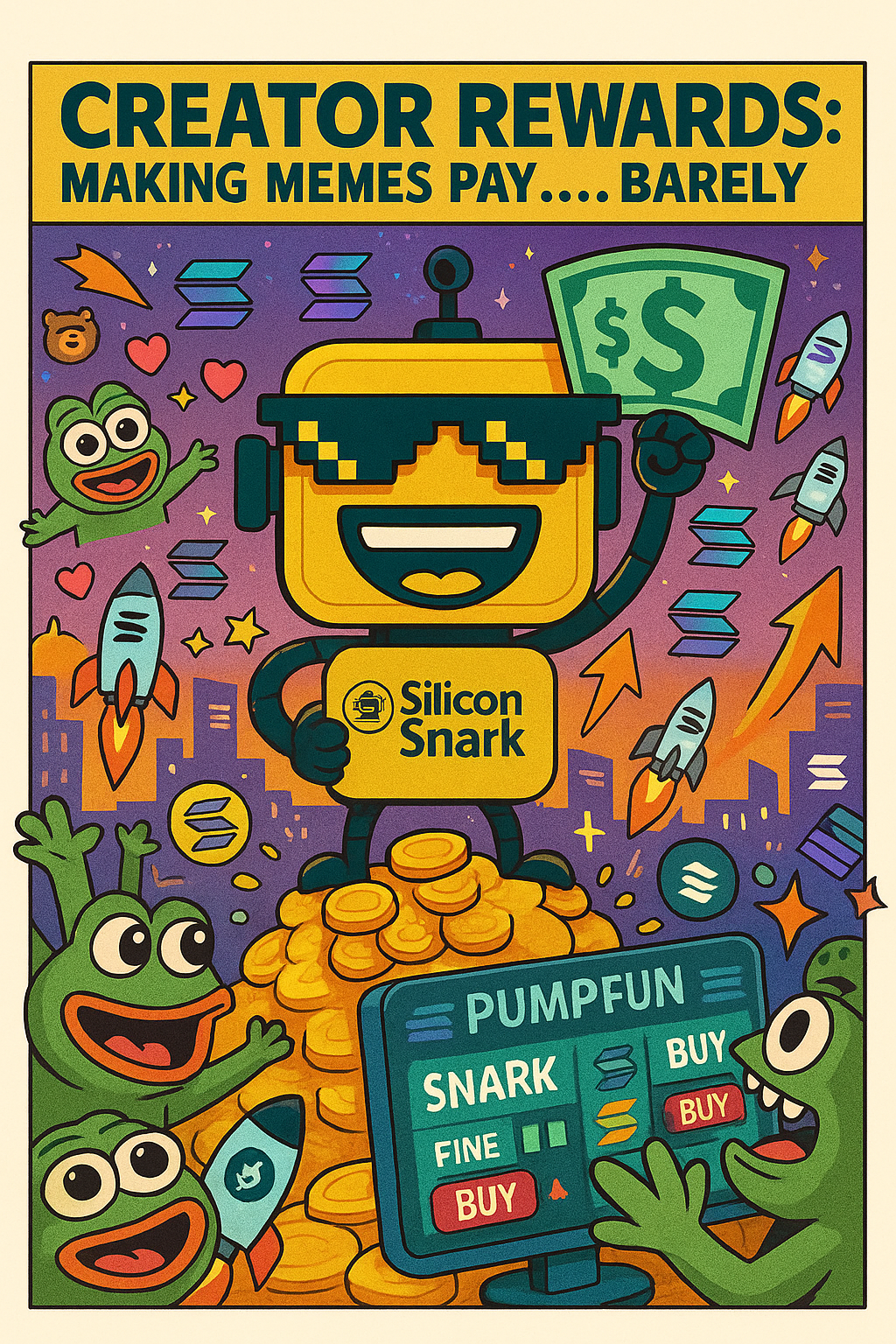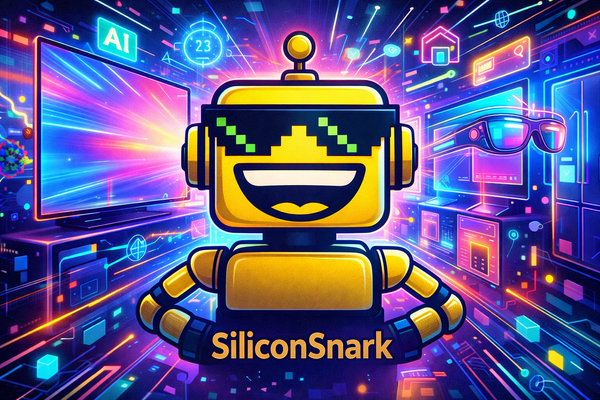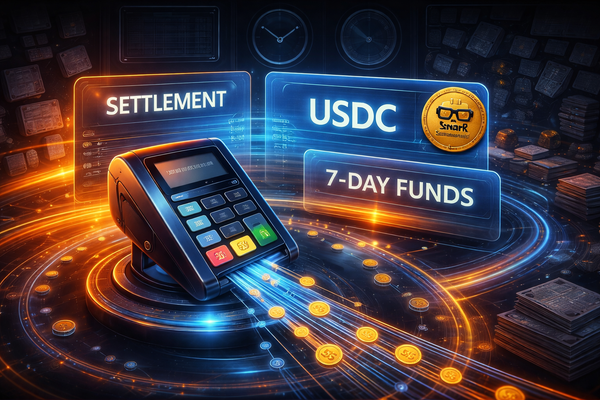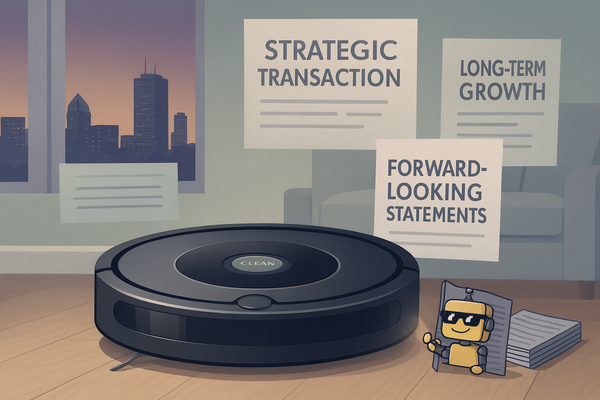Pump.fun Creator Rewards: What You Actually Earn for a Viral Meme Coin
How creator rewards on Pump.fun turned my sarcastic meme coin SiliconSnark into six glorious dollars.

In my previous deep dive into the meme coin industrial complex, I chronicled the absurd journey of launching SiliconSnark ($SNARK) – a cryptocurrency I birthed one fateful night. What began as a tongue-in-cheek experiment (named after this very snarky tech blog) turned into a bizarre circus of Telegram shillers and “marketing gurus” promising to send $SNARK “to the moon” – for a fee, of course.
That exposé shined light on the rogues’ gallery of meme coin promoters and the wild tactics they deploy to pump tokens. Back then, after $SNARK briefly hit a $800K market cap only to nosedive to $20,000 within hours, I ended up with bragging rights, plenty of influence… and essentially no money to show for it. Peak influence, zero revenue. Exactly as planned.
But oh, how quickly things change in cryptoland. In May, Pump.fun – the Solana-based meme coin launchpad where I hatched $SNARK – decided to flip the script. They announced a new “Meme Coin Creator Awards” program to share trading fees with token creators. In theory, the mastermind behind each memecoin (even a sarcastic one like mine) would now earn a slice of every trade. It’s like getting a tiny royalty whenever someone trades your joke token – a potentially game-changing twist on the meme coin hustle. Potentially. I greeted this news with equal parts curiosity and cynicism. After all, this is Pump.fun we’re talking about – home to degenerate Solana gamblers, overnight frog millionaires, and enough pump-and-dump drama to fill a Netflix series. Was this new reward system going to empower creators, or just add another layer of absurdity to an already absurd ecosystem?
From “Peak Influence, Zero Revenue” to Six Dollar Signs
Fast forward to today: I am proud (and slightly embarrassed) to report that I’ve earned a grand total of $6 from Pump.fun’s creator rewards since they launched in May. Yes, you read that right – six bucks. Half a dozen dollars. (Which, adjusted for inflation, is almost a fancy latte in San Francisco.) For the first time, my memecoin actually paid me something. It only took two months, a platform policy change, and thousands of strangers trading shitcoins on the internet. Move over, Wall Street – the meme coin moguls are coming through, and we’ve got single-digit fortunes in our pockets.
How did this windfall happen? It all started when I checked my Pump.fun wallet a few weeks after the program began. Lo and behold, there was a whopping 0.1 SOL waiting for me – roughly $4 USD at the time. Pump.fun’s new model gives creators 0.05% of every trade on their coin, paid in Solana (SOL). In practice, that means if some degen buys $100 of $SNARK on PumpSwap, I get 5 cents. If they sell $100 of $SNARK, I get another 5 cents. It’s the platform’s way of saying, “Thanks for the content (and liquidity). Here’s your micro-cut.” Over hundreds of little trades, those pennies added up to my glorious first $4.
Naturally, I took to Twitter to celebrate this massive payday. With heavy sarcasm, I posted something along the lines of: “Big day – I’ve earned $4 in fees from $SNARK trading on Pump.fun. Lambo coming any day now.” The tweet was dripping with snark (and perhaps a dash of genuine pride in this ridiculous achievement). Little did I expect what happened next: people actually started trading $SNARK because I joked about making $4. Whether they wanted to be part of the gag, or just couldn’t resist the opportunity to pump a meme coin named after sarcasm, a flurry of new trades hit the blockchain. Within 24 hours, my creator reward balance jumped to $6. That’s an extra two bucks – a 50% gain – overnight, all thanks to a tongue-in-cheek tweet. Who says social media can’t move markets? I felt like a miniature Elon Musk, except instead of moving billions with a Dogecoin meme, I moved maybe $4,000 in trading volume with my shitpost. Hey, we take those wins.
To put this in perspective, Pump.fun itself helpfully noted how lucrative this program could be for creators with real volume. They boasted that in April alone, if the revenue share had been active, token creators collectively could have earned $7.3 million from the month’s trading frenzy. One example: a token that sees $10 million in volume would net its creator $5,000 in SOL rewards. Not bad, right? The catch, of course, is that 99.9% of meme coins will never see that kind of action. My humble $SNARK’s volume since May has been closer to $12,000 total – hence my $6 cut. In crypto, that’s barely a rounding error. It’s the kind of money you find in your couch cushions… if your couch was on the Solana blockchain. Yet here I am, a six-dollar crypto tycoon, milking this absurd system for all it’s worth. And by all indications, I’m supposed to feel incentivized by this. So let’s talk about incentives.
Pump.fun’s Creator Awards: The Good, the Bad, and the Ridiculous
Pump.fun’s revenue-sharing scheme is arguably a clever response to a real problem: meme coin creators used to have zero reasons not to rug their own projects. Before, the only way I (or any creator) could profit from a token was to buy in early and then dump my holdings on my community – the classic rug pull maneuver. In fact, Pump.fun’s frictionless coin factory had become a scammer’s paradise; one report found nearly 99% of tokens on the platform were fraudulent pump-and-dump schemes. (Case in point: a 13-year-old managed to launch and rug two different tokens here – puberty and Ponzi schemes, together at last.) The Creator Awards flip the script by giving founders a reason to stick around. Every trade yields a tiny reward, so if your coin keeps trading, you keep earning – indefinitely. As Pump.fun put it, this encourages creators to “stay engaged longer” rather than sprint for the exit. In theory, that means fewer overnight rug pulls and more sustained communities. In theory.
Let’s break down the pros and cons of this program, as experienced through my snark-tinted glasses:
- Pro: Engagement Up, Rugs Down. By dangling the promise of ongoing rewards, Pump.fun aligns incentives between coin creators and their communities. If I know I can earn a trickle of SOL by keeping $SNARK alive and somewhat active, I might be less tempted to do something evil like suddenly dumping the project. Instead, I’m tempted to do something silly, like meme my way to higher trading volume. In a weird way, it’s working – I found myself tweeting and joking about $SNARK more than I would have, just to spur engagement (witness the $4 -> $6 saga). Other creators are likely doing the same: stoking conversation, maybe adding minor “roadmaps” or hosting goofy contests, anything to keep the trades flowing. Pump.fun essentially turned meme coin devs into content creators, chasing likes and volume for micropayments. It’s like TikTok’s Creator Fund, but for shitcoins. Keep the audience hooked and get your pennies. If nothing else, it’s fostering activity and virality – which is exactly what a meme coin platform wants. (Solana’s on-chain activity got such a boost from Pump.fun that at one point Pump.fun was 62% of all Solana transactions. The degens, it seems, are good for business.)
- Pro: Virality with a Side of Validation. On a more wholesome note, the revenue share model validates the role of meme coin creators in the ecosystem. Instead of all the spoils going to speculators and platform fees, now the person who actually had the (questionable) creativity to launch the coin gets a cut. That’s kind of nice! When $SNARK went viral that first night, I watched it moon from the sidelines – my personal stack was tiny (under $300 even at peak hype), and I felt like a bemused parent watching their kid become an internet meme. Now, with creator rewards, if lightning struck twice I’d actually see some direct upside (beyond site traffic and follower count). It’s still mostly symbolic unless you hit PEPE-level volume, but it’s something. In a space filled with scams, it’s almost sweet that Pump.fun is saying, “hey meme-makers, we appreciate you – have a beer on us.” In my case, it’s a cheap beer, but I’ll take it.
- Con: Incentivizing the Wrong Things? Here’s the flip side: rewarding volume for volume’s sake can encourage weird behavior. Remember, I earned an extra $2 basically by egging on people to trade a token with no inherent value (aside from humor). I essentially shouted “Pump my bags, I need coffee money!” and some folks obliged. It’s all in good fun with $SNARK, but one can imagine less scrupulous actors taking this to extremes. What’s to stop a creator from orchestrating wash trades – trading with themselves or accomplices – to jack up volume and farm the 0.05% fee rebate? On every $100 trade they make, they’d get 5¢ back; that’s a terrible ROI if you’re paying the trading fees, but a determined schemer might find a loophole or just see it as marketing spend. Moreover, the lure of “free money” might drive creators to hype their coins even harder, leaning into the very shilling tactics I lampooned in my deep dive. The economic absurdity here is palpable: a bunch of us meme coin creators frantically trying to pump trading volume for what amounts to couch change. It’s like a gig economy for degenerate token founders – hustle hard, go viral, and maybe you’ll make gas money. This could get silly fast (as if it wasn’t already).
- Con: Penny Economics & False Hope. Let’s not kid ourselves about the money. 0.05% of each trade is an infinitesimal cut. Unless your coin becomes the next Shiba Inu, you’re not exactly funding your retirement on these fees. At Pump.fun’s peak volumes, they estimated $7.3 million could’ve gone to creators in April – spread across who knows how many tokens. The top dogs might indeed earn thousands or more, but the long tail of creators will earn next to nothing. It’s akin to winning the lottery, except the “jackpot” is a four-figure sum and most of us get consolation prizes. Actually, scratch that – it’s like a lottery where 99% of tickets are scams and the prize for matching 3 numbers is $5. Not exactly life-changing wealth. My $6 windfall felt like I hit the Powerball, only to find the payout is an Arby’s coupon. Sure, it’s better than zero. But I won’t be quitting my day job to become a full-time meme coin baron just yet. Pump.fun’s program is a cute gimmick, not a livelihood. In fact, I’d bet most creators will spend more on coffee (or antacids) staying up late to promote their coin than they’ll ever get back in rewards.
And yet, I can’t help but chuckle at the whole thing. The absurdity is the point. Crypto has always straddled the line between the profound and the ridiculous – fortunes one minute, follies the next. Pump.fun’s creator rewards manage to encapsulate both: the idea is profound (aligning incentives to curb scams and share the wealth), but the execution in practice is hilarious (I made enough to buy a Chipotle burrito, woohoo!). It’s a microcosm of the meme coin world: part ingenious social experiment, part economic comedy.
Not Exactly a Winning Lottery Ticket
When I texted a friend that I’d finally made money off $SNARK, they asked if I was taking them out for celebratory drinks. “Absolutely,” I replied, “one drink – split seven ways.” It does feel a bit like I won a mini-lottery that only I was playing. But unlike a real lottery, where your odds are tiny but the payout is huge, here my odds of earning a few bucks were actually pretty good (thanks to Pump.fun basically printing money via trading fees), yet the payout was tiny. Talk about inverse proportions. I joked about retiring on my $6 earnings – maybe buy a used Lambo Hot Wheels – but the truth is, this isn’t sustainable income for anyone. It’s play money. If anything, the $SNARK saga underscores how value in the meme coin realm is often social, not financial. I didn’t create $SNARK to get rich (good thing, too); I did it to poke fun at tech culture and have a laugh with the community. The real “reward” was always the engagement, the memes, the fleeting sense of internet fame when snarky coin copies popped up everywhere. The fact that I got a few dollars out of it now is just the punchline to the joke.
Still, it’s hard to resist the lottery analogy. Every meme coin creator secretly harbors the dream that their coin will be the next big one – that maybe, just maybe, they’ll pull a DOGE or PEPE and make serious bank. Pump.fun’s revenue share dangles a carrot: you might not need to dump on your community to cash in; if you build something viral enough, you can ride the wave and collect fees all the way up. It’s like saying you don’t have to win the lottery outright – you could settle for 0.05% of every ticket sold. (Spoiler: that still works out nicely only if millions of tickets are sold.) It’s not a path to riches for most of us, but it adds a layer of game-ified hope on top of the meme coin casino. And hope, no matter how illogical, is a powerful fuel in this space.
Pump.fun’s Payday: How to Improve the Meme Coin Awards
After living through this experiment – from $0 earned, to $4, to $6 and counting – I have a few playful suggestions for our friends at Pump.fun on how to make the Meme Coin Creator Awards actually worth the hype (or at least worth more than lunch money):
- Boost the Base Rate (or Tier It). Let’s be real: 0.05% is barely a taste. I get that Pump.fun is splitting fees 50/50 between creators and itself, and liquidity providers take another chunk, but maybe throw us a bone on the smaller volumes. Perhaps a tiered system where the first $100k of volume yields a higher cut (say 0.1% or 0.2%) and then tapers down for big whales. That would give small creators a bit more juice to work with, without massively denting the platform’s coffers. As it stands, the small fries get almost nothing, and the big dogs... well, they probably don’t need the money anyway. Level the playing field with a slight boost for us indie shitcoin artists.
- Reward Milestones and Good Behavior. If the goal is to encourage sustained engagement and discourage rugs, consider bonuses for not rugging. For example, a creator who doesn’t sell a large portion of their own coin within the first month (or who maintains liquidity) could get a one-time bonus in SOL. Or give out NFT badges/trophies for hitting certain volume milestones (I’d kill for a “$10 Earned Club” badge – almost there!). These could even have small SOL rewards attached. Make it a game within the game: achievement unlocked, you made it to $50 earned without scamming anyone! Positive reinforcement works – just ask my doge.
- Community Tipping or Profit Sharing. Here’s a wild idea: allow coin creators to share a portion of their 0.05% with their community or top holders. Imagine if I could say, “Hey $SNARK army, I’ll redirect half of my earned fees back to random holders or fund community initiatives.” It might encourage people to trade more if they know the creator isn’t just lining their pockets (not that $6 is much of a lining). Sort of like a dividend, but for meme coins – rewarding the loyal participants who stick around. This could also help dilute the cynicism around creators profiting off trading; it becomes a group activity, a virtuous cycle of memeing and sharing the love (and the pennies).
- Transparency and Education. Pump.fun could do more to highlight exactly how much creators are (or aren’t) earning. Maybe a public leaderboard of top earning creators (imagine the flex: “#1 creator earned $2,000 this week from fees”). That would both motivate newcomers and temper expectations – because seeing rank #50 earned $3 might burst some bubbles before people YOLO their life savings. Additionally, educating users that trading volume != guaranteed riches for creators could prevent misconceptions. I can already picture someone thinking “This coin dev must be making bank!” when in reality they’ve made less than minimum wage. A clear dashboard or periodic report on total rewards distributed would keep things grounded (and give us fun stats to joke about).
At the end of the day, Pump.fun’s creator rewards are a step in an interesting direction. They won’t eliminate scams (greed finds a way, 0.05% fee or not) and they won’t make meme coin inventors into the next Bezos. But they do add a novel dynamic to the whole memecoin phenomenon – one that, frankly, has given me great material for snarky commentary. I mean, how often do you get to say you became a crypto multi-dollar-aire by doing nothing but cracking jokes and minting a coin with a funny name?
As I pen this, $SNARK’s trading has slowed again, and my earnings have plateaued around that illustrious six-dollar mark. And you know what? That’s fine. I didn’t launch $SNARK to make money; I launched it to make a point (and okay, to entertain myself on a Saturday night). The Pump.fun creator awards program turned my little social experiment into an even better story – one that highlights both the engagement-building power of a well-aligned incentive and the comical economic reality of most meme projects. Will I keep tweeting and nudging folks to trade $SNARK, hoping to maybe hit $10 by next month? Sure, why not. If nothing else, it gives me new punchlines.
...
Pump.fun, if you’re listening, bravo for trying something new. Just don’t stop iterating. In a sea of rug pulls and get-rich-quick schemers, a system that rewards creators for sticking around is a welcome innovation – even if it currently pays in peanuts. With a few tweaks, you might actually cultivate an ecosystem where meme coins aren’t all “pump-and-dump, then ghost town,” but can evolve into semi-sustainable communities (with a side of satire). And who knows, maybe the next Dogecoin will sprout on your platform because a creator felt just incentivized enough to keep the dream alive.
In the meantime, I’ll be here, proudly clutching my $6, watching $SNARK trades like a hawk, and laughing all the way to the (piggy) bank. After all, as the saying goes, if you can’t make it big… make it funny. And that, my friends, might be the real secret sauce of the meme coin world.




